Search Engine Optimization is a powerful channel for industries where demand for related keywords are high. In fact, the higher the demand, whether directly or indirectly related to a product or service, the bigger the chances of scaling through SEO.
Today SEO has changed: ChatGPT search is rising fast, empowering itself and Bing, whereas Google remains the market leader. Our response to these market shifts is tried and tested – and ready for your business!
This free SEO course for ranking No.1 on Google is a great start to learn the latest shortcuts to distinction. Make no mistake: it will still be hard work.
After more than a decade in SEO services, we have seen that this type of revenue is invaluable for 90% of businesses aiming to enhance their online visibility and capture a larger share of organic search traffic.
The power of search volume cannot be overstated; high rankings for targeted keywords can drive significant traffic and conversions, making SEO a highly lucrative marketing channel.
We chose to present clients with all the transparent components of SEO, starting with (a) tactical and strategic planning, moving to (b) on-site SEO, and then finally to (c) off-site SEO which is mainly a matter of link building, which by itself consists of many sub categories due to the number of methods involved to earn reputable links.
An honest approach to SEO services and expectations:
We have been a preferred outsourcing partner to a number of SEO agencies, SEO directors and CMO’s. As a buyer of SEO services you deserve to know some facts vendors might not always want to share. You only have to look at Sitetrail Case Studies to see that we’ve been around the block and produced spectacular results in some really tight industries.
We’d prefer to point out the facts about SEO that nobody wants to talk about:
All this makes it clear that SEO’s dependency on ever-changing search engine algorithms introduces a high-risk factor. Google’s algorithm changes, such as Panda, Penguin, Hummingbird, Mobilegeddon, and the BERT update, have dramatically shifted the digital landscape. These updates aimed to reward high-quality, relevant content and penalize manipulative SEO practices, but even businesses adhering to best practices have sometimes been negatively impacted, seeing dramatic drops in rankings and traffic overnight.
This volatility underscores the risk of heavily relying on SEO without diversification. The situation is further complicated by so-called SEO experts who offer penalty reversal services, promising quick fixes without a clear understanding of which of Google’s 100+ ranking updates affected a website. Such practices can be misleading and often futile, as recovering from penalties requires a comprehensive strategy tailored to the specific update and a deep understanding of Google’s guidelines. The promise of penalty reversal without genuine expertise not only misleads businesses but can also lead to further penalties or loss in ranking, making it critical for businesses to engage with reputable SEO professionals who employ ethical, sustainable practices.
Companies need to know what is a realistic SEO budget and what their competitors spend on SEO. In most of the Western world today, wage inflation and high employment levels is a real challenge SME’s face when executing a proper SEO strategy and sourcing good SEO packages to drive your campaign forward.
Here is the shocking part for those who do not use a number of agencies for their SEO: Most businesses allocate significant funds to their marketing team before investing in actual SEO services. On average, a Chief Marketing Officer (CMO) costs $150,000 per annum, a Head of SEO $120,000, and their assistants another $120,000. This financial commitment is substantial and, for companies generating over $2 million annually in profit with more than 80% of their revenue coming from SEO, it’s a viable strategy. So how is the small guy supposed to grow from $100K per year to $2M if their scale does not support these costly SEO teams?
Some companies should absolutely have internal teams, however for 70% of SME’s it makes sense to outsource their SEO services and own the strategy.
For small and medium enterprises (SMEs), the above financial setup is not feasible. The costs associated with hiring a full-time, in-house SEO team can be prohibitively expensive, making it difficult for smaller businesses to compete in the SEO arena. This is where the concept of fractional SEO services comes into play, offering a solution tailored to the needs and budgets of SMEs.
Sitetrail addresses this gap by providing fractional SEO services. This approach allows SMEs to access top-tier SEO expertise without the need to hire a full-time team, significantly reducing overhead costs. By leveraging Sitetrail’s services, businesses can effectively manage their SEO needs within a more reasonable budget.
Understanding the potential savings of using an agency can be a game-changer. By opting for agency services over in-house teams, companies can save up to $350,000 per year. If a business is willing to invest approximately 25% of this saved amount into targeted SEO efforts through an agency, they stand a chance to achieve substantial success. However, it’s important to recognize that minimal investments, such as $1,000 per month, are unlikely to yield significant results due to the highly competitive and inflationary market conditions.
This breakdown serves as a reality check for businesses exploring SEO investments. It underscores the importance of strategic budget allocation and the value of considering fractional services for those unable to sustain the high costs of an in-house SEO department.
Talk to us today to see how we can help you break through the noise!
Outsource your SEO Strategy. This is both an initial and ongoing process. It is constantly re-evaluated against new rules and competitor responses. Here is the best starting point for any business:
SEO strategy extends beyond just keyword and competitor research; it’s also about creating unique elements that distinguish your business online.
Keyword and Competitor Research: Identifying what potential customers are searching for and analyzing competitors’ strategies to find gaps and opportunities.
Linkable Assets: High-value content like in-depth guides, original research, and infographics designed to attract backlinks and enhance your site’s authority.
Unique Tools: Developing tools or resources specific to your industry can significantly drive traffic and engagement, setting your business apart.
In essence, a robust SEO strategy incorporates foundational research with the innovative development of content and tools that not only attract attention but also provide real value to your audience. Our white-label outsourcing model helps agencies and CMO’s lift their workloads quicker.
Developing on-site SEO content is a strategic and tactical endeavor. It requires a research-driven approach that focuses on identifying suitable keyword volumes. This method not only aligns content with market demand but also addresses genuine customer issues, establishing the business as a go-to resource within the industry.
ON-site SEO is about creating relevant landing pages and silos on your own website where future visitors are anticipated. Different websites run with anywhere between 10 and 1000 landing pages. This is the first step of the process but can be reviewed quarterly. The second step, OFF-site SEO, is all about persuading other websites to link to your landing pages and linkable assets. This is also an opportunity to build referral traffic to your website – a secondary benefit. Competitor and keyword research, with a knowledge of Google algorithmic policies and penalties are essential building blocks in both cases.
SEO, it’s common for 80% of budgets and efforts to be channeled towards offsite link building. While the primary goal is often to bolster SEO rankings, it’s strategic to approach link building in a manner that also enhances referral traffic. Managed SEO solutions let you sit back, where our teams cover the A to Z of writing and publication. DIY SEO solutions let you write your content and pick the domains from our self-service platform.
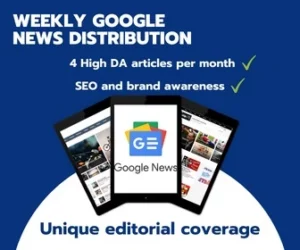
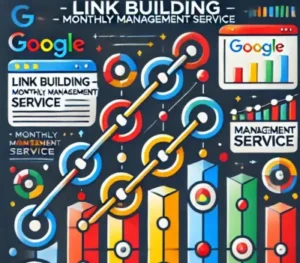
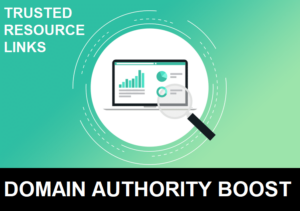
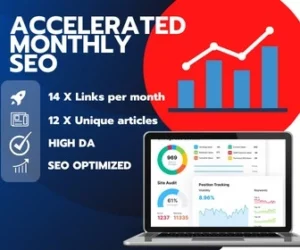
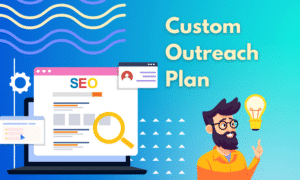
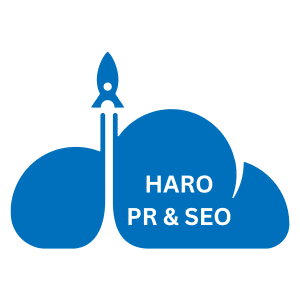
This dual-purpose strategy of both referral traffic and SEO value, maximizes the value of each link acquired. It also safeguards your business against algorithmic updates. The importance of optimizing for pattern recognition in AI cannot be overstated: we know how to do this, which will position your brand for better results in ChatGPT search, Google and Bing. The growing market share of ChatGPT is something to capitalize on – and we’re the first SEO agency to help you target ChatGPT alongside conventional search engines.
Among the most advanced link building techniques are creating and distributing high-quality content that naturally attracts links, guest blogging on reputable sites in your industry to reach a broader audience, developing partnerships for co-marketing initiatives, and engaging in digital PR to gain links from news sites and other high-authority domains. These methods not only support SEO objectives but also drive direct traffic, making them a smart investment in a comprehensive digital marketing strategy. Outsource this to Sitetrail for measured results.

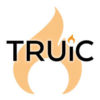





6000+ Happy Customers

Results speak louder than words. See our client results
Trusted by S&P500 companies we’re a high-performance agency delivering digital marketing and PR excellence and influencer marketing engagement. Backed by a advanced digital infrastructure services ranging from custom web development to cybersecurity.
As an agency that served more than 6000 clients with cumulative client revenues exceeding $1Billion, perhaps by now you’d consider us qualified to share some valuable SEO insights?
Well, that is exactly what we’ll do in the following videos:
Viewers can expect to delve into a wide range of SEO-related topics that are crucial for businesses navigating the digital landscape. We’ll explore how to allocate SEO budgets effectively within a multichannel marketing strategy, addressing the pivotal question of how much to invest in SEO to achieve optimal results. Our discussions will also cover the potential for websites to recover swiftly from a Google penalty, providing insights and strategies for bouncing back. We’ll examine the viability of SEO as a standalone marketing strategy and assess the impact an SEO agency can have on your business, distinguishing between harm and help. Additionally, we’ll identify which Google updates might have influenced your website’s performance and outline strategies for earning reliable SEO backlinks, a cornerstone for boosting site visibility and credibility. These topics are designed to offer comprehensive guidance for enhancing your online presence through strategic SEO practices.
In today’s competitive market, understanding your SEO budget is crucial. In fact, based on a few calculations, SEO may, or may not even be the right channel for your business.
With wage inflation impacting budgets, scaled US companies are investing two hundred thousand to three hundred thousand dollars to establish an SEO director and a small support team, and that’s before any external vendor costs. Of one hundred to five hundred dollars per new landing page and one hundred to two thousand dollars for high-quality links, and as much as twenty-five thousand dollars to build a phenomenal tool that acts as a lead magnet.
So, where does this leave smaller businesses without the resources for such a team?
When considering your SEO budget, remember the impact of organic ranking versus pay-per-click, or PPC. Turning off PPC can lead to immediate drops in sales as your listings disappear from Google. However, a strong organic ranking can persist for up to 40 months, benefiting from Google’s preference for trusted ‘legacy’ content. This enduring value is why some businesses allocate ten to forty times more on SEO than PPC.
However, both SEO and PPC have scalability limits tied to search volume. For instance, if there’s a monthly search volume of 1 million for a product, attempting to sell 2 million units solely through search won’t work due to these limits. You’ll need to explore additional channels for growth.
To optimize your SEO budget, consider alternatives to hiring an in-house team, such as following a comprehensive buying guide. Yet, if you’re thinking of spending less on SEO than PPC, remember that while strategies like online PR and referral traffic building will benefit from a small budget, it will probably not help for SEO. Check out the free SEO guide in the link below and watch a few more of our videos to build your knowledge on this.
Some sites can, others never do. Not what you wanted to hear about penalty recovery, right? Let’s face it: a Google penalty is akin to navigating through treacherous waters, where the wrong move can sink your presence overnight. Amidst this, a shocking statistic emerges: only about ten percent of businesses that face a serious Google penalty manage to recover. This statistic is a stark reminder to critically evaluate the self-serving advice of those offering to fix your penalty for a fee. Consider the case of big names like About.com, which, unable to recover from a penalty, chose to rebrand into multiple smaller niche sites, redirecting the link power from the original domain to escape the penalty’s grip.
Recovery from a Google penalty is indeed possible, and there are numerous cases to prove it. Yet, the journey to recovery is fraught with uncertainty. With hundreds of ranking factors at play, the bulk of experts can only guess the real reasons behind a penalty in the absence of confirmed proof, making the path to reclaiming your SEO standing a challenging endeavor.
Since your company may already be in distress from a loss of revenue associated by these penalties and traffic losses, tread carefully: I can promise you that in most cases, irrational and tactical knee-jerking does not fix the problem, it will only drain your financial resources even more. So now might be the time to do your SEO differently, but more importantly, if it really hurts your company – now might also be the time to diversify into a safer multi-channel strategy that does not place you at the behest of Google.
Today, multi-channel marketing can offer safety through diversification. Leveraging SEO as the sole channel for your marketing efforts is a narrow strategy that overlooks a vast number of opportunities.
SEO, while a cornerstone of online visibility, cannot single-handedly bear the weight of a brand’s entire online presence. The question at hand is whether SEO can stand as an isolated marketing strategy. The simple answer is no, not if you’re aiming for sustainable and robust business growth.
Focusing exclusively on SEO is like walking a tightrope without a safety net. Search engine algorithms are not only opaque but also in constant flux. A single update can significantly alter your site’s visibility overnight. Businesses that have relied solely on SEO have experienced firsthand the volatility of their chosen strategy—finding their rankings, and consequently their traffic and sales, drastically affected by changes beyond their control.
The reality is that SEO’s effectiveness is contingent upon factors that are often undisclosed and unpredictable. This unpredictability underscores the necessity of a multi-channel marketing approach. Diversifying your marketing efforts across various platforms ensures that your business isn’t disproportionately vulnerable to changes in search engine algorithms. It’s about creating a robust framework for your online presence, one that can withstand the ebbs and flows of digital trends and guidelines.
Moreover, a multi-channel strategy doesn’t just mitigate risk; it also opens up avenues for reaching your audience in ways that SEO alone cannot. Different channels cater to different segments of your audience, enabling personalized engagement and fostering brand loyalty. It’s about meeting your audience where they are, whether that’s on social media, through email newsletters, or via content marketing on other platforms.
To rely on SEO as the sole marketing strategy is to ignore the dynamic nature of consumer behavior and digital consumption. The digital ecosystem is vast, with numerous touchpoints and opportunities for engagement. A well-rounded marketing strategy leverages these opportunities, ensuring that your business remains resilient in the face of algorithm changes and market shifts.
In essence, while SEO is a vital part of any marketing strategy, it should not be the only part. A diversified, multi-channel approach not only safeguards your business but also enhances your capacity to connect with and grow your audience in meaningful ways.
When your site vanishes from Google’s search results following an update, it’s akin to navigating through a storm without a compass. The uncertainty and urgency to find a solution can be overwhelming. Today, we’re addressing a critical and often misunderstood aspect of SEO – discerning the reason behind a Google penalty. This discussion might just change the game for many and challenge the practices of countless SEO outfits.
Firstly, it’s crucial to understand that the only time you can be certain about the reason for a penalty is if Google has communicated this through a manual action notice in your Search Console. Manual actions are Google’s way of letting you know they’ve manually reviewed your site and found it non-compliant with their guidelines.
However, here’s where it gets complex: about 90% of penalties are automated, meaning they are applied by Google’s algorithms without any manual review. In these cases, you won’t receive any notification of a manual action. This lack of clarity has fueled an entire industry of SEO ‘experts’ claiming they can solve your penalty issues, often without even knowing what the problem is.
Let’s be clear: regardless of who the so-called expert is that you consult with: if there’s no manual action notification, any attempt to pinpoint the penalty is, at best, an educated guess. Google’s algorithm is a behemoth, with hundreds of checks running simultaneously. Matching the timing of your site’s traffic dip to a known algorithm update doesn’t guarantee that it was indeed the cause of your ranking drop.
The names of some penalties, like Panda, Penguin, or Fred, might sound familiar but there are hundreds of them. Each targets different aspects of a site, from content quality to link trustworthiness. But without Google’s explicit confirmation, identifying the exact cause of your site’s penalty is a shot in the dark.
We understand how stressful and frustrating this situation can be. It’s natural to seek a quick fix, but it’s also crucial to approach this with a rational mindset. Falling for the promise of penalty removal services, without clear evidence of the penalty’s nature, is likely to lead to further revenue loss and wasted effort.
Our aim here is not to discourage but to encourage a more informed and cautious approach to dealing with Google penalties. Knowledge is power, and in the vast, sometimes murky waters of SEO, being equipped with the right information is your best defense. Check out the SEO guide in the link below and let us know your thoughts.
Earning reliable backlinks is a cornerstone of SEO that can significantly boost your site’s visibility and credibility. When done smartly, it will also deliver referral traffic which represents new clients. Now let’s talk about how to build a safe, varied, and naturally appealing backlink profile, a strategy that goes beyond mere numbers to focus on the quality and diversity of your links.
One of the most effective methods to attract quality backlinks is by offering valuable resources on your website. Imagine hosting a tool that’s not only useful but also free for your visitors to use. This could be anything from a comprehensive keyword research tool to an interactive design template generator. Such resources become linkable assets that people naturally want to share and reference, driving organic backlinks to your site.
Similarly, publishing insightful statistics and reports can set your website apart as an authoritative source of information. When you become a go-to resource for unique, data-driven insights, you encourage other sites to link back to you as a reference point, further enriching your backlink profile.
But how do you amplify the reach of these valuable resources? This is where media relations and strategic outreach come into play. Platforms like NewsPass from Sitetrail and Help a Reporter Out (HARO) offer golden opportunities for gaining exposure and securing backlinks from reputable sources. By connecting with journalists and content creators who are constantly in search of fresh, compelling content, you can get your resources featured in news articles, blog posts, and reports, all of which contribute to a diverse and natural link profile.
The key to success in these endeavors is relevance and value. Your offerings and insights must genuinely benefit the user or provide unique perspectives that aren’t found elsewhere. This not only helps in securing backlinks but also in building long-term relationships with other websites and media outlets.
So to wrap up, building a reliable SEO backlink profile is about much more than just accumulating links. It’s about creating and sharing valuable content that others find indispensable. Through strategic use of linkable assets, insightful data, and robust media relations, you can develop a backlink strategy that not only enhances your SEO but also strengthens your brand’s online authority. The SEO Guide in the video below will help you discover some great link building opportunities.
In digital marketing, where your brand’s story is everything, many press release distribution companies exist. To name a few examples: PR Web, BusinessWire, Cision, EIN PressWire and Global Newswire. Using these companies for a few purposes can be great. But will it work for SEO link building, to manipulate your domain authority? Experts say no.
What is the problem? All these companies are well-run and they can excellently disseminate your news. They are run by amazing entrepreneurs. However, experts and Google alludes to the probability of attracting harsh links spam penalties when aggressive anchor text duplication occurs. Unfortunately, the traditional PR distribution method of duplication, does exactly that, which negatively impacts your SEO.
This is exactly why NewsPass from Sitetrail was created: To solve this problem, which we’ll discuss shortly.
Before we do that, note that if SEO is not important to you, there is a valid use case for these duplicate press release distribution companies. It is mainly to help maintain transparency for publicly traded companies that are required to publish and share financial data, for which these platforms are super fast and effective. However, there is no SEO use case here because of Google’s transparent guidelines.
So let’s explain the SEO Challenge and then discuss the right solution, because imagine the frustration of realizing that your press release, intended to boost your visibility, ends up complicating your SEO efforts due to Google’s spam algorithms.
The big problem here, is easy to spot: As you know now, Google harshly penalizes link spam – which is created when the exact same anchor text is duplicated across all the sites where press releases are being duplicated on.
On your screen, you can see an example of an unhealthy, duplicate link and anchor text profile based on 10 duplicate news releases over which the user has zero control.
A secondary challenge is that Google hides duplicate articles, it will only let readers discover the first indexed version, and not the duplicates. So knowing these facts, ask yourself this: is there still any purpose today in reading a fancy distribution report consisting of duplicates?
Now let’s discuss the most revolutionary and compliant solution: NewsPass from Sitetrail. It is a strong media platform with independent news sites. NewsPass values unique content and helps you avoid link spam from the start. The methodology is based on Google’s preference for originality.
With NewsPass, brands have unmatched control over the anchor texts in their press releases. On your screen you can see an example of a healthy, unique link and anchor text profile created with NewsPass, spread across 10 unique news articles.
Just notice how with NewsPass, brands can refine their backlink methodology by ensuring relevance and diversity, thereby avoiding the algorithmic penalties associated with poor linking practices.
To wrap up: Remember these duplicate press release distribution platforms are amazing companies led by great entrepreneurs. However, as you can see, their usage no longer supports SEO due to strict link spam rules from Google. It is not their fault if your business receives a Google penalty: it is your fault for selecting the wrong tool.
Choose NewsPass today and get unlimited access to independent news websites that will help you build a safe link profile. Notice we don’t claim that NewsPass is the only SEO tool to use for a natural link profile. It is wise to also leverage additional link building methods, such as having linkable assets, like free tools and useful content on your website. This will ultimately mean that humans who manage other websites, will choose to link to you organically, thereby supplementing those valuable links you gain from NewsPass.
Search Engine Optimization (SEO) stands as a cornerstone for achieving online visibility and success. Crafting an effective SEO strategy requires a multifaceted approach, encompassing everything from meticulous audits to content creation and technical optimization. Below we discuss the critical components of developing and implementing a comprehensive SEO plan. By understanding and applying these elements, businesses can enhance their online presence, attract targeted traffic, and achieve sustainable growth in the competitive digital marketplace.
A comprehensive website audit involves evaluating the current SEO performance of a site, identifying issues that affect search visibility, and providing actionable insights for improvement. This step is crucial for laying the foundation of a strong SEO strategy.
Competitor analysis involves examining the SEO strategies of competing businesses to identify their strengths and weaknesses, opportunities for differentiation, and strategic advantages. This information can guide the development of a more effective SEO strategy.
The process of keyword research involves identifying high-value, relevant keywords that the target audience uses to search for the company’s products or services. This step is essential for aligning content with user intent and market demand.
Developing a keyword strategy involves creating a plan to target the identified keywords throughout the website’s content and meta tags, ensuring that the site can be easily found by the intended audience.
Content optimization ensures that web pages are not only rich in quality and engaging content but also optimized for the target keywords, striking a balance between readability and searchability.
Optimizing meta tags, including title tags, meta descriptions, and headers, is key to improving click-through rates and search rankings, making content more appealing to both search engines and users.
Optimizing the site’s structure and URL hierarchy enhances crawling and user experience, making it easier for search engines to index the content and for users to navigate the site.
Proper tagging and sizing of images are crucial for improving page load speed and visibility in image searches, contributing to the overall SEO performance.
Enhancing website load times is critical for providing a better user experience and improving search rankings, as speed is a key ranking factor for search engines.
Ensuring that the website is fully responsive and offers a seamless experience on mobile devices is vital, given the increasing prevalence of mobile search queries.
Transitioning the site to HTTPS not only secures it but also provides a slight ranking boost, as search engines favor secure websites.
Implementing structured data with schema markup helps search engines understand the content better and can improve visibility in search results.
Identifying and correcting crawl errors, broken links, and redirect issues are essential for maintaining the health of a website and ensuring efficient indexing by search engines.
A backlink strategy aims to acquire high-quality backlinks from reputable sites within the industry, which can significantly improve a site’s authority and search rankings.
Leveraging social media profiles can enhance engagement and direct traffic back to the website, contributing to the overall SEO strategy.
Optimizing for local SEO, including Google My Business listings and local citations, can improve visibility in local search results, which is crucial for businesses serving specific geographic areas.
Producing high-quality, SEO-friendly content that engages and attracts the target audience is fundamental to driving traffic and improving site authority.
Distributing content through various channels helps increase its visibility and drive traffic to the site, amplifying the impact of content marketing efforts.
Regularly updating the blog with relevant, optimized content is key to engaging readers and improving SEO, keeping the site dynamic and informative.
Providing regular reports on SEO performance, including rankings, traffic, and conversions, allows for monitoring progress and identifying areas for improvement.
Using tools like Google Analytics to gain insights into user behavior and traffic sources is crucial for refining SEO strategies and making data-driven decisions.
Continuously analyzing performance data and making strategic adjustments to SEO tactics ensures that the strategy remains effective and aligned with changing market conditions.
Offering training sessions on SEO best practices and strategies helps empower the company’s team to contribute to SEO efforts effectively.
Providing ongoing consulting supports the company in making informed decisions about their SEO strategy and online marketing efforts, ensuring sustained growth and competitiveness in the digital space.